eSchool Media announces eight winners of its 2014 Tech-Savvy Superintendent Awards
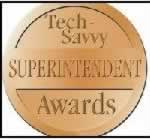
One is a former Gates Foundation executive whose district uses computer programming to teach essential math skills. Another has advised the Federal Communications Commission on digital textbook use. All are working to transform instruction from a passive activity to an active, more inquiry-based model that prepares students for success in a digital, information-based world.
Meet the winners of our 2014 Tech-Savvy Superintendent Awards, sponsored by Lenovo. Now in its 14th year, the program honors the nation’s top K-12 superintendents who best exemplify outstanding leadership and vision in using technology to advance their district’s educational goals.
Chosen by the editors of eSchool News with help from last year’s winners, the 2014 superintendent honorees will be recognized in a series of live webinars in March. During these free webinars, scheduled for March 19th and March 26th at 2:00 p.m. Eastern time, senior-level executives from school districts nationwide will have a chance to hear from these eight winners and learn the keys to their ed-tech success.
To register for the March 19th webinar, click here. To register for the March 26th webinar, click here. To read about past award winners, click here.
 Luvelle Brown, Superintendent, Ithaca City School District, N.Y.
Luvelle Brown, Superintendent, Ithaca City School District, N.Y.
Before becoming Ithaca City’s superintendent, Brown served as the CIO for a school system in Virginia. He has also been a teacher, assistant principal, and principal, and his experiences in all of these positions have given him broad insight into how technology can transform education.
Brown envisions creating a student body of “6,000+ Thinkers.” To meet this goal, he has enacted many initiatives, such as reducing the ratio of students to computers fivefold and adding ubiquitous wireless coverage throughout all buildings. A “Contemporary Learning Spaces” initiative seeks to redesign the district’s learning spaces, and Brown has piloted game-based learning in the elementary schools.
One key to Brown’s success is that he seeks to learn from others. For instance, a Student Advisory Council meets monthly with Brown and his cabinet. These student representatives from each school make recommendations on acceptable technology use, ed-tech purchases, and so on. Each summer, Brown hosts a national conference in Ithaca that features innovative thought leaders discussing contemporary trends in education—and he has held a series of “Community Conversations” about his district’s strategic plan among local businesses, places of worship, community centers, and even hair salons.
 Dallas Dance, Superintendent, Baltimore County Public Schools, Md.
Dallas Dance, Superintendent, Baltimore County Public Schools, Md.
Since assuming leadership of the country’s 26th largest school district in July 2012 at the age of 30, Dance has focused on giving students a high-quality, comprehensive classroom experience. His vision is this: “To equip every student with the … 21st-century skills needed to be globally competitive, BCPS must ensure that every school has an equitable, effective digital learning environment and [that] every student has equitable access to learning and developing proficiency in a second language.”
To this end, Dance has started a “digital conversion” that will give each student a digital learning device by the 2017-18 school year. Dance places learning and curriculum first and aims to use technology as a tool to enhance teaching. Rather than simply buying devices and asking teachers to figure out how to use them effectively, curriculum is being rewritten to align with the Common Core and to be delivered from a digital platform. The district is a member of the Digital Promise League of Innovative Schools. Dance also created a Department of Digital Learning within the Division of Curriculum and Instruction, which is charged with implementing the digital conversion and integrating technology fully into teaching and learning.
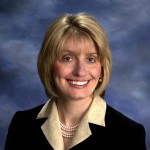 Christine Johns, Superintendent, Utica Community Schools, Mich.
Christine Johns, Superintendent, Utica Community Schools, Mich.
As superintendent of Michigan’s second largest school district, Johns has transformed teaching and learning through the effective use of technology. A member of the Digital Promise League of Innovative Schools, Johns has spearheaded the district’s focus on ed tech to create personalized learning for students.
Utica kindergartners use iPads, laptops, and interactive whiteboards to develop digital literacy skills at an early age. High-quality digital content is infused with adaptive assessments that personalize learning for each child and provide immediate feedback to both students and teachers. The district has a partnership with Discovery Education that provides the company’s digital science Techbook and customized professional development to all 25 elementary schools. Enrollment and success in college-level Advanced Placement courses has doubled, and a blended learning model for struggling high school students has led to a dramatic increase in the percentage of students earning diplomas.
Another example of Johns’ leadership is the Center for Science and Industry, which gives students the ability to work directly with business leaders to gain a competitive edge for high-paying jobs in the fields of robotics, engineering, and multimedia production. Every graduate from this program over the past two years has gone on to pursue a postsecondary experience at the university, community college, or trade school level.
 Chi Kim, superintendent, Ross School District, Calif.
Chi Kim, superintendent, Ross School District, Calif.
To give students the knowledge and technology skills they will need to succeed in college and the workforce, Kim has invested in new teachers, a formal K-8 technology curriculum, and new technology throughout the district. She has implemented advanced elective classes featuring a Fab Lab, 3D modeling and animation, iPad app creation, and more.
Chi also integrated PYTHON programming throughout the middle school math curriculum. Students are creating their own computer programs using algorithms essential to the concepts they learn in math class, reinforcing cross-subject connections. Kindergarten through fifth graders attend a formal thematic computer lab program once a week, bringing them from fundamental computer use all the way up to podcasting and video editing.
From students using technology to create and collaborate through their Google Apps for Education accounts, to teachers assessing, facilitating, and collaborating through various online tools, the district’s use of technology is enhanced by two integration specialists who meet directly with the teachers biweekly to help them customize their lessons.
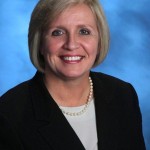 Kamela Patton, Superintendent, Collier County Public Schools, Fla.
Kamela Patton, Superintendent, Collier County Public Schools, Fla.
When Patton became superintendent of Collier County Public Schools (CCPS) in 2011, one of her first priorities was initiating a technology adoption that has put the district at the forefront of the digital revolution. CCPS, which has 44,500 students, now has 29,000 computers, an advanced district-wide fiber optic network, and other ed-tech tools. Each classroom has a Mimio interactive whiteboard, a document camera, a ceiling-mounted projector, and a sound amplification system.
Last May, CCPS launched a Bring Your Own Device (BYOD) program. Patton convinced local corporations to donate iPads to students who don’t have a personal device of their own. CCPS has used Discovery Education’s interactive digital Techbook as its official science textbook for students in grades K-8, and Patton was invited to Washington, D.C., last year to meet with the chairman of the Federal Communications Commission to discuss the district’s use of digital textbooks.
Patton recognizes the importance of providing robust professional development to ensure that teachers are comfortable using technology. The district’s “Teach Me in My World” project provides intensive professional learning and co-teaching opportunities to educators on the instructional use of iPads in the classroom, supplemented by online videos, tutorials, webinars, summer institutes, and attendance at conferences such as Florida Education Technology Conference (FETC).
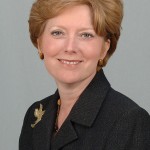 Karen Rue, Superintendent, Northwest ISD, Texas
Karen Rue, Superintendent, Northwest ISD, Texas
Rue is described by colleagues as a “transformational leader” who recognizes the importance of 21st-century skills in preparing students for their future. The district’s mission is to ensure that students are “future ready” for college, the global workplace, and personal success. Under Rue’s leadership, Northwest ISD has defined this readiness as the ability to use digital media responsibly and effectively to communicate, synthesize, and create new knowledge; solve problems and analyze critically; learn from mistakes and adapt to new thinking; and determine validity and relevance of information, among other skills.
To help students develop these skills, the district has equipped all classrooms with projectors, document cameras, and other interactive technologies. In August, every high school student received a Dell Latitude 10 tablet, and all middle school students will receive a Dell tablet next year. The devices are equipped with wireless networking and software, including the district’s filtering system. Recognizing the importance of sustained professional development, the district employs six instructional technology support teachers. These teachers provide just‐in‐time training and support, and they model effective teaching using technology.
In response to a parent survey that showed parents prefer receiving information on the go, Rue oversaw the design and implementation of a district mobile app for Apple and Android devices. The first phase of the app includes district and campus news updates, a staff directory, campus locations, a who-to-call department phone list, and an option to receive push notifications. The second phase will feature access to grades, attendance records, lunch account balances, and more.
 Steven Webb, Superintendent, Vancouver Public Schools, Wash.
Steven Webb, Superintendent, Vancouver Public Schools, Wash.
As superintendent, Webb has made technological advancements a priority through the district’s second-generation strategic plan, Design II. This plan calls for “flexible learning environments,” with embedded technology and multiple instructional delivery methods. It also calls for the use of data-driven decision making and specialized programs to engage students in science, technology, engineering, and math.
Vancouver’s IT department was restructured to strengthen the collaboration between technology and curriculum and leverage the use of technology devices. To generate excitement for classroom applications of technology, Webb in 2010 directed his team to develop an annual event called the weLearn Technology Showcase. The showcase gives parents and the community a firsthand look at how teachers and students use technology in the classroom. That helped lead to passage of a technology bond levy in February 2013, which will support the move to one-to-one technology over the next six years.
Outside the classroom, Webb has endorsed the digitization of several operations for greater efficiency and cost savings. For instance, the district upgraded its procurement system to eliminate cumbersome traditional purchase orders, saving $1.5 million. All student fees are now collected via an electronic system, and the implementation of GPS routing software has reduced transportation costs by more than $300,000 per year.
 George Welsh, Superintendent, Center Consolidated School District, Colo.
George Welsh, Superintendent, Center Consolidated School District, Colo.
Welsh heads a district where nine out of 10 kids live in poverty, and half are learning English as a second language. Despite these challenges, graduation rates at Center High School have increased from 33 percent when Welsh took over as superintendent in the mid-90s to 93 percent in 2012. Technology has played a key role in this transformation, and Welsh has been a driving force in using technology to give students access to resources and learning outside the limits of rural Colorado.
Most district parents do not have home phones, cable television, or computers, let alone internet access, so the school district is the technology hub of the community. Under Welsh’s leadership, and with school board and community support, the district prioritized technology planning as the cornerstone of strategic thinking about students’ future. All district staff have laptops and/or iPads. Students in grades K-5 have iPads, and students in grades 6-12 have either iPads or laptops. Students participate in online assignments, resources, and instructional support through Moodle, Edmodo, web resources, blogs, electronic assignments, and assessments. The district library also houses the public library, with technology access for the public—and Welsh has been seen in the evenings teaching adult technology classes for the community.
- School Specialty Announces Winners of the 2024 Crystal Apple Awards Celebrating Inspirational Teachers - May 2, 2024
- Carousel Digital Signage Cuts Through the Noise with Carousel Daily - May 1, 2024
- LearnWith.AI Launches TeachTap, the first AI-powered learning app for AP exam prep and high school courses - May 1, 2024

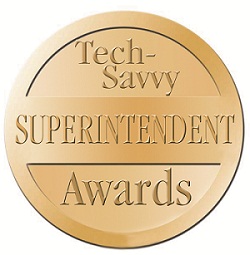
Comments are closed.